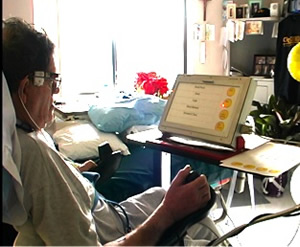Improved AAC Interface Strategies for Limited/Uncontrolled Movements
Tom Jakobs
(InvoTek, Inc.) |
|
Challenge:
This project seeks to investigate new techniques for making AAC devices easier and more efficient to use, especially for people that presently have few AAC choices. These people often have substantial needs and a confounding array of physical and cognitive abilities that require an optimized and intuitive user interface.
Goals:
• Identify new interface strategies for use by people with severe movement limitations
• Prepare design specifications for innovative access techniques
• Investigate the impact of new alternate interface strategies
Activities:
• Identify and investigate new AAC interfaces that users find intuitive and that require little effort and skill to setup.
• Investigate combining multiple access methods into a single, efficient control strategy.
• Identify and investigate new techniques for entering information into computers that don’t require precise control.
Knowledge Transfer
Fager, S., Beukelman, D., & Jakobs, T. (June, 2009). Supporting Communication of Individuals with Minimal Movement. Presentation at the Annual Conference of the Rehabilitation Engineers Society of North America, New Orleans, LA.
|


